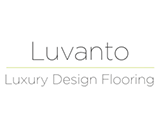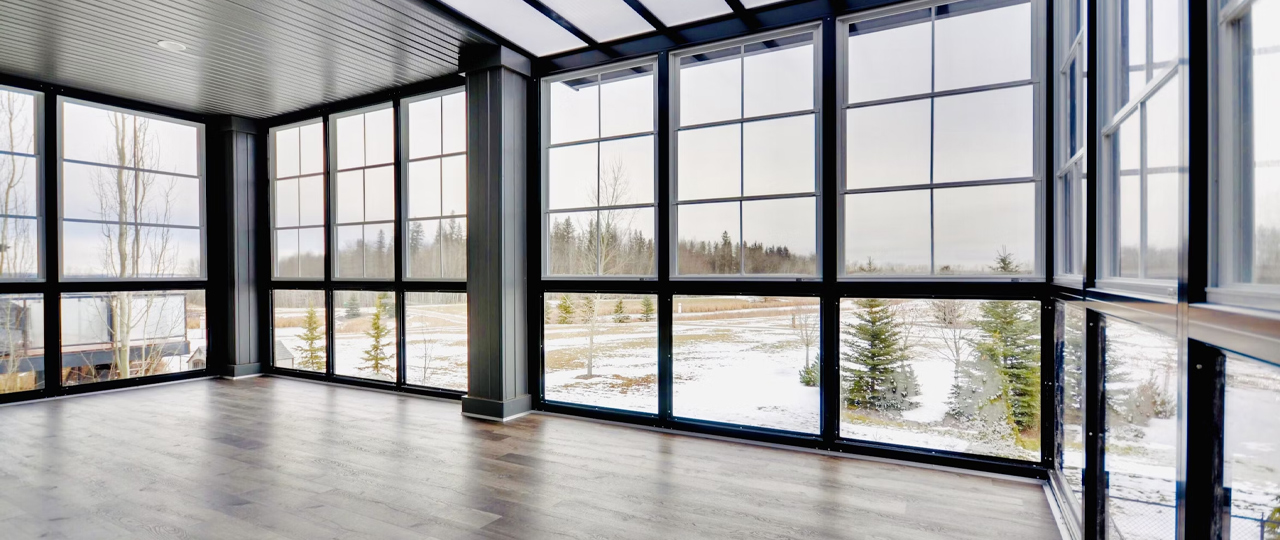Installing flooring can be a daunting task, especially if you’re not too knowledgeable about the process. Good flooring can make a huge difference in a room, providing the finishing touch in people’s new or refurbished homes.
While various professionals are on hand to help with installing flooring in your home, many people decide to take on the task themselves, turning to Google for help when needed.
From installation methods to the best ways of cleaning specific types of flooring, the internet is the go-to for any DIYer seeking advice. That’s why we at Flooring King have stepped in to help, we’ve explored the top ten most googled questions regarding flooring – according to monthly search data – and answered each query to provide clarity and expert advice to those needing a helping hand.
So, without further ado, let’s take a look at the most googled questions regarding flooring!
1. How to lay laminate flooring? – 3,700 monthly searches
Yielding 3,700 monthly searches, the most searched question concerning flooring was; ‘How to lay laminate flooring?’ While laying laminate flooring can seem complex at first, with the right preparation, the process can be made much simpler.
Let’s first run down the list of tools and materials needed to lay laminate flooring correctly:
Tools
- Nail Punch
- Hammer
- Utility Knife
- Handsaw/Jigsaw
- Sander/Sandpaper
- Wood Adhesive
- Vacuum cleaner or Broom
- Metal Rule
- Carpenters Square
- Pull Bar
Materials
- Underlay
- Damp-proof Membrane
- Waterproof tape
- Laminate underlay joint tape
- Polythene Sheet
- Timber off-cuts
Aside from the above tools and materials, DIYers should ensure they have the appropriate safety gear including; safety goggles, knee pads, ear protectors and a dust mask. When all the relevant tools have been collected, the laying process can begin.
When fitting laminate flooring, the procedure can be simplified by beginning in the corner. Starting from any corner, attach the laminate boards, ensuring they click into place.
Continue this approach, laying spacers in between boards and the closest wall while you’re going along. 8 to 10mm of space must be reserved between the board and the wall in case of potential expansion.
If necessary, a hand or jigsaw can be utilised to create a good fit, trimming the final board to a specific size – it’s important to guarantee that the laminate flooring doesn’t come into contact with any pipes, walls or door frames to minimise the risk of damage.
2. What is LVT Flooring? – 2,300 monthly searches
Moving on, the second most-googled flooring question, with 2,300 monthly searches, is ‘What is LVT flooring?’, with DIYers keen to get more information.
So, what is it? Well, LVT stands for Luxury Vinyl Tile, and it’s a collection of individual tiles that must be fitted together to give the appearance of real stone, wood or tile flooring. It’s a popular choice due to it being easy to install and clean while also being very durable.
LVT has a smooth finish and is offered in various colours and patterns, allowing DIYers to choose a more specific and tailored look. Unlike other flooring types, replacing damaged sections is a simple process due to the tiles being individually laid.
If you’re considering Luxury Vinyl Tiles, it’s important to evaluate which type is best for you. This is because this flooring type comes in various sub-categories such as rigid core, loose lay LVT, and click LVT flooring.
3. How to lay vinyl flooring? – 1,900 monthly searches
It’s interesting to see that vinyl flooring remains an incredibly popular choice for DIYers, with ‘How to lay vinyl flooring?’ ranking as the third-most googled flooring question with just under 2,000 monthly searches.
Before we explore the steps, let’s first take note of the required tools for installing vinyl flooring correctly:
- Measuring tape
- A pencil or pen
- Craft knife/pair of scissors
- Double-sided tape
- Vinyl adhesive
- An adhesive trowel
- Stanley saw
- Mitre box
- Hammer & nails/wood adhesive
Before laying the vinyl, one of the most crucial steps is preparing the subfloor for installation. To do this, DIYers must ensure it’s as clean and even as possible, if not, there’s a risk of bumps showing due to the softness of this flooring type. If needed, a levelling compound can be used to ensure the subfloor is prepared sufficiently.
The vinyl must be left for up to 24 hours to acclimatise to the room’s conditions. Once the preparation is complete and the required tools have been collected, begin to unroll the vinyl and cut to the size of the room. We recommend leaving at least 15cm of leftover material in case you run short. Once done, begin to lay the flooring, following the main light source in the room.
Finally, fitting skirting boards is an effective way of protecting the vinyl and completing a much neater look. A mitre box and saw can be used to cut the skirting to appropriate lengths and wood adhesive can then be used to fit them around the room, where necessary.
4. How to clean laminate flooring? – 1,400 monthly searches
Next, ranking as the fourth most-googled flooring question according to monthly search data was ‘How to clean laminate flooring?’ with 1,400 searches. It’s encouraging to see that DIYers are not only using the internet to access safe installation methods but cleaning processes too.
When cleaning laminate, there’s a few things that make life a lot easier. Beyond your standard vacuum, these include:
- A microfibre mop and cloth
- White vinegar
- Foam sponge
Firstly, use a vacuum to hoover up any dust, debris or crumbs, working from the corners into the middle. If you don’t have a vacuum handy, a soft-bristled broom will do the job!
Once the dust and loose dirt have been cleared, it’s time to get mopping. A microfibre mop can be used here, but be careful about how much you soak the brush, as too much water can trigger a warping effect on the laminate flooring.
Distilled white vinegar and water are great ways of treating scuffs or stains on laminate flooring. We suggest using a melamine foam sponge when treating a spot in need of some TLC, any hard-bristled brushes should be avoided as they can cause damage and increase scuffs.
To maintain the best laminate look, we suggest cleaning daily, but these cleaning requirements can differ from household to household.
5. Most common mistakes when laying laminate flooring? – 900 monthly searches
The fifth most googled question regarding flooring focused on common blunders, with ‘Most common mistakes when laying laminate flooring?’ receiving 900 monthly searches. Mistakes happen, and people want to know how to avoid them – makes perfect sense!
Overall, poor preparation and a lack of patience can contribute heavily to mistakes when laying any type of flooring – but what are the three most common mistakes when it comes to laminate?
Failing to prepare the subfloor is a mistake many DIYers encounter and can cause long-term issues to the health and look of the floor. Laminate in particular requires a clean surface that is both as level and smooth as possible to provide the best look. The subfloor can be prepared by sanding plywood floorboards, fitting sheets of hardwood or utilising cement compounds.
Additionally, another big error many people make is not leaving expansion gaps between the flooring and the closest wall. As the temperature and humidity fluctuate within a room, the wooden floor can expand or contract, not leaving room for this can result in joints unlocking or the floor lifting.
Lastly, the third most common error is a simple one but quite easily forgotten – not giving the laminate flooring enough time to acclimatise to the room’s temperature.
It’s crucial to leave 24-48 hours before laying to allow the laminate to adjust, not doing so can increase the possibility of cracks and gaps appearing once the floor has been laid.
6. How to cut laminate flooring? – 900 monthly searches
Aside from the laying procedure and common mistakes, DIYers are also keen on discovering ‘How to cut laminate flooring?’ with the question receiving 900 monthly searches.
The most important tool needed for this is a saw, the type of saw is up to the individual, with mitre saws, handsaws, circular saws and jigsaws all suitable for the task. We do, however, recommend opting for a high tooth-per-inch blade to ensure the cleanest cuts. A pencil and (220-grit) sanding block are also important for the cutting process.
To cut laminate, you’ll first need to mark the cutting line, leaving a quarter inch for potential expansion. Using a pencil, mark the point where the end of the installed piece meets the loose piece, you can use a square to guarantee a straight cutting line.
Next, position the laminate on the saw and lower the blade slowly into the material before pushing it through, let the blade stop completely before removing the laminate. If the edge isn’t clean, sand using a 220-grit sanding block.
7. What is engineered wood flooring? – 600 monthly searches
The seventh most popular question on Google regarding flooring was ‘What is engineered wood flooring?’ with 600 monthly searches. Research is important when choosing a new floor type, and it’s reassuring to see so many people turn to the internet for clarity on options.
Engineered wood flooring is a layered flooring type that is perceived as an alternative to solid wood. It consists of multiple layers bonded together to create a durable and stable floor. The top is a thin layer of hardwood while the middle and bottom are made up of plywood and softwood.
Let’s take a look at the pros and cons of engineered wood flooring:
Pros
- Cheaper than solid wood flooring
- Less chance of warping, twisting or lifting in humid or moist conditions
- Easy to clean
- Can be installed easily
Cons
- Prone to damage, can be scratched or dented easily
- Not the best for bathrooms
- Expensive in comparison to laminate
8. How to lay herringbone flooring? – 600 monthly searches
Herringbone flooring can be quite challenging to put together due to its unique, zigzaggy pattern, that’s why it was no surprise to see ‘How to lay herringbone flooring?’ rank as the eighth-most googled flooring question with 600 monthly searches. Herringbone flooring can come in various types, including herringbone LVT and herringbone engineered wood.
Below are the tools required to lay this particular type of flooring:
- Set square
- Saw
- Tape measure
- Utility knife
- Tapping block
- Rubber mallet
- Hand roller
- Wood glue
- Ruler
- Pencil/chalk
Like other types of flooring, preparing the subfloor is an important step that mustn’t be overlooked. Clean the subfloor and install underlay if appropriate to guarantee a level surface.
Following that, a moisture barrier should also be installed to protect the flooring, this can be done perpendicular to the direction of the herringbone flooring. Once that’s done, it’s time to create the centre line, measure the width of the room and mark the centre of the room with chalk or a pencil.
With all the preparation out of the way, laying can begin. Begin at the centre line, working outwards and apply wood glue to the tongue of the first board, inserting it into the groove of the second board. To secure boards, use a flooring nailer or rubber mallet. Repeat until the first row is complete, end pieces can be cut to fit as long as expansion gaps are left between the final panel and wall.
For the second row, much of the process is the same. However, to create the herringbone pattern, alternate between full and half-length panels and stagger the seams. Again, end pieces can be cut to fit where necessary. The steps should be repeated for as many rows as the room needs to finish laying the entire room.
Once the laying is complete, install the shoe moulding, which covers the expansion gap. Just be sure to cut to size before nailing it in place.
9. What is parquet flooring? – 450 monthly searches
Ninth on the list of the most googled questions relating to flooring is ‘What is parquet flooring?’, the question received 450 monthly searches as designers aim to get a better understanding of the popular floor type.
Parquet is a wood flooring that is put together by arranging wood slats in repeating patterns. The installation process consists of stapling, glueing or nailing tiles to the subfloor. In terms of performance, parquet is hardwood, meaning it performs similarly to solid-hardwood flooring. However, the aesthetic is quite different due to the unique patterns, and it can be time consuming to install because of this. It’s also similar to styles like herringbone and chevron, with subtle differences in the design earning favourites for each.
Let’s have a look at the pros and cons of parquet flooring:
Pros
- Easy to clean
- Structurally durable
- Easy installation
- Variety of designs and colours
Cons
- Visually busy design
- Potential for damp damage
- Outdated style
- Easily marked
Parquet is a popular choice due to the overwhelming number of pattern designs and colours available to DIYers. However, the wood may not be suitable for households with children because it is easily marked.
10. How to clean LVT Flooring? – 400 monthly searches
Finally, ranking as the tenth-most googled question on flooring; ‘How to clean LVT flooring?’ received 400 monthly searches as people aimed to find out how to keep the flooring looking pristine. So, without further ado, let’s dive into the final query.
The cleaning procedure for luxury vinyl tile is remarkably similar to laminate flooring as the process consists of vacuuming and damp mopping. Vacuuming can help remove any dirt or debris from the floor while mopping with a damp microfibre cloth can have the LVT looking brand new.
It is vital not to drag furniture across the flooring when preparing to vacuum or mop, this is because the floor type is fairly susceptible to scuffing. We also recommend using mats in busy room areas to help protect against scratches.
To conclude…
Overall, examining the most commonly googled flooring questions has yielded some fascinating results.
It was particularly intriguing to see so many searches relating to laying specific types of flooring, with many people giving it a go themselves rather than hiring a professional. With the correct research and preparation, laying flooring can turn into a much simpler process.
Liam Cleverdon, one of 2 directors is the driving force behind Flooring King's sales team. With vast experience and knowledge in the industry, Liam transforms customers homes with incredible advice and expert opinion that raises industry standards.













